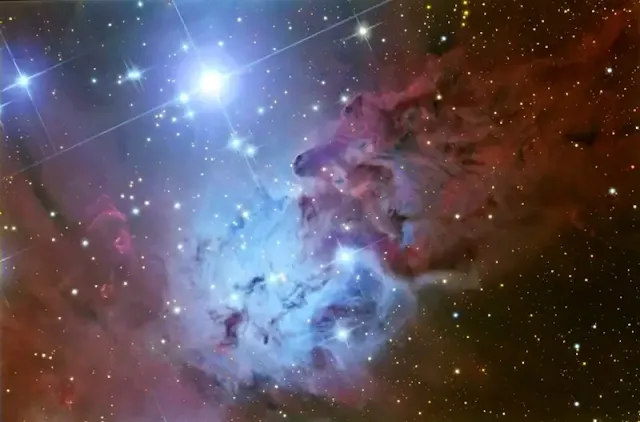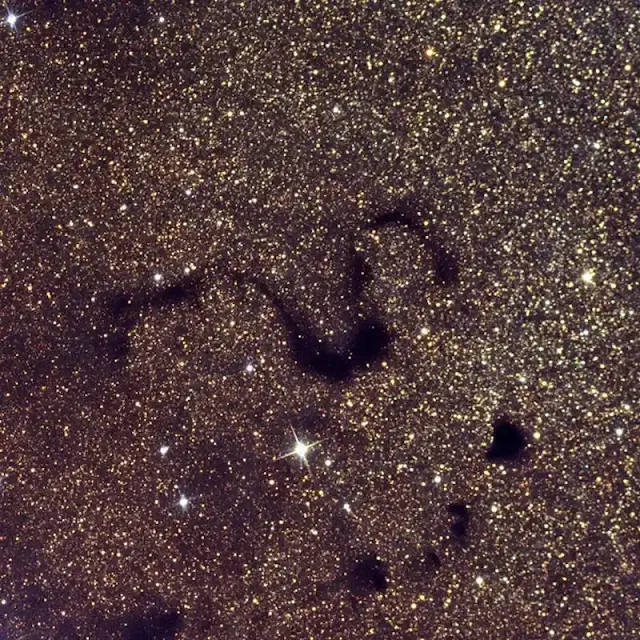Nebulas are awe-inspiring cosmic phenomena that captivate the imagination of astronomers and stargazers alike. But beyond their ethereal beauty, some nebulas bear a striking resemblance to creatures found here on Earth. These nebulae, with their intricate shapes and vibrant colors, evoke images of animals, from the majestic horse to the elusive jellyfish. In this article, we’ll explore some of the most fascinating nebulas that resemble animals, each with its own unique story and cosmic significance.
Top 12 Nebulas That Look Like Animals
Nebulas are not just beautiful cosmic phenomena, but some resemble familiar creatures from Earth. These stunning formations of gas and dust can take on the shapes of animals, sparking imagination and wonder. In this section, we explore some of the most intriguing nebulas that bear a striking resemblance to various animals across the universe.
1. Horsehead Nebula (Barnard 33) – Resembles: Horse's Head
The Horsehead Nebula is one of the most celebrated dark nebulas, situated in the Orion constellation. Its name comes from its resemblance to the head of a horse set against a background of glowing hydrogen gas. It is a result of the obscuring of the light from the nearby stars due to the denser dust and gas. This nebula is around 1,500 light-years from the Earth and is of great importance to scientists in the development of a star because it comes within the Orion Molecular Cloud Complex, and new stars form there.
 |
| Source: Wikipedia |
2. Elephant's Trunk Nebula (IC 1396A) – Similar to: Elephant's Trunk
The Elephant's Trunk Nebula looks like an elephant's trunk, with writhing and curling paths through space. It is located at about 2,400 light-years from Earth in the Cepheus constellation. It is an emission nebula that gives quite a fabulous view of star formation. Such intricate shapes are created by powerful stellar winds and ultraviolet radiation from nearby stars sculpting through dense gas and dust, so that it creates a shape like a trunk. It shows some cosmic forces that drive stellar nurseries.
 |
| Source: Wikipedia |
3. Fox Fur Nebula (NGC 2264) – Resembles: Fox's Fur
The Fox Fur Nebula, in the Monoceros constellation, owes its name to the fact that it appears like a clump of fur. This reflection nebula is approximately 2,700 light-years away and forms part of the larger Christmas Tree Cluster. It is full of gas and dust that reflect the light from nearby stars. These elements play in a beautiful, fur-like texture: wonder within and on this heavenly creation. It also is an excellent example on how starlight can be used for illumination and shaping.
 |
| Source: Wikipedia |
4. Cat's Eye Nebula (NGC 6543) – Resembles: Cat's Eye
The Cat's Eye Nebula is a planetary nebula in the Draco constellation and one of the most studied in the sky. Its unique, ringed appearance and glowing filaments make the nebula look like a cat's eye to many. At a distance of about 3,000 light-years, this nebula is the result of the final stages of a star such as our Sun, which has shed its outer layers. In great detail, the nebula structure informs one about the last stages of stellar evolution.
 |
| Source: NASA |
5. Lobster Nebula (NGC 6357) – Resembles: Lobster
The Lobster Nebula is an emission nebula, situated some 8,000 light-years away in the constellation Scorpius. It is named for its visual appearance, which bears a resemblance to a lobster's body. This nebula is chock-full of gas and dust, actively being sculpted into shapes by the forming stars within its structure. There, young stars will burst to life in this part of the universe, which will cut space using their powerful radiation and stellar winds to expose the overall claw-like pattern. Of all the brightest regions in the Milky Way, there is one that rises like a lobster from the sea: the spectacular sight of the dynamic processes in star birth.
 |
| Source: Wikipedia |
6. Crab Nebula (Messier 1) – Resembles: Crab
The Crab Nebula, located approximately 6,500 light-years away in the constellation Taurus, is the remains of a supernova explosion seen by Chinese astronomers in 1054 AD. The nebula owes its name to its crab-like shape, as filaments extend outward from a central pulsar, the star core that remained after the explosion. A supernova remnant, the Crab Nebula provides a great laboratory for learning about massive star death and the formation of the heavy elements that enrich the universe.
 |
| Source: Wikipedia |
7. Manatee Nebula (W50) – Resembles: Manatee
The Manatee Nebula is named after the slow-moving, aquatic mammal, the manatee, and is about 18,000 light-years away in the constellation of Aquila. It is a supernova remnant powered by a microquasar, shooting high-energy jets into the surrounding gas and dust, sculpting it into a shape that bears an uncanny resemblance to a manatee. The study of the Manatee Nebula helps scientists better understand the behavior of supernova remnants and how they affect the interstellar medium.
 |
| Source: National Radio Astronomy Observatory |
8. Jellyfish Nebula (IC 443) – Resembles: Jellyfish
This supernova remnant is located around 5,000 light-years away in the Gemini constellation. It is defined by delicate, tendril-like structures that resemble jellyfish tentacles. This nebula resulted from the explosion of a massive star, and the shockwaves from the explosion interact with the surrounding gas to produce these distinctive features, which look like jellyfish. The Jellyfish Nebula represents an important study in the aftermath of stellar explosions.
 |
| Source: Wikipedia |
9. Snake Nebula (Barnard 72) – Looks like: Snake
The Snake Nebula is about 650 light-years away in the Ophiuchus constellation. It takes on the winding, coiled form of a snake. This dark nebula blocks light from the stars behind it, and this snake-like shape is therefore visible against the backdrop of the Milky Way. It is an excellent example of new star formation: it is one of the locations of intense star formation activity within its dense, dark clouds.
 |
| Source: Wikipedia |
10. Fish Head Nebula (IC 1795) – Looks like: Fish's Head
This is the Fish Head Nebula or the Northern Bear Nebula in the Cassiopeia constellation, some 6,000 light-years away. The head of the fish is very well-crafted out by intense radiation from young, hot stars that ionize the surrounding gas and create a fish-like shining formation. This nebula is also a stellar nursery, offering a fascinating view into the processes that lead to birth.
 |
| Source: Wikipedia |
11. Stingray Nebula (Hen 3-1357) - Likeness to: Stingray
This nebula in the Ara constellation is estimated to be about 18,000 light-years away and is the youngest known planetary nebula. The shape of the nebula has wings flaring outward which closely resemble a stingray. Such a shape arises due to the death of a star as it expels its outer layers, giving rise to characteristic "wings" of a nebula. The Stingray Nebula provides the earliest stages of planetary nebula evolution.
 |
| Source: Wikipedia |
12. Wolf-Rayet Nebula (Thor's Helmet) – Resemble: Wolf's Head or Viking Helmet
Wolf-Rayet Nebula, also the other name by which it is known as, is an emission nebula located in the Canis Major constellation. The reason for its similarity to the shape of a wolf's head or a Viking helmet lies in the incredibly strong stellar winds of a huge Wolf-Rayet star. The star is losing its outer layers in what is an astonishing rate, and gas in the surrounding is molded through interactions with strong winds emanating from the star. It is located some 15,000 light-years from Earth and is a rather rare window into the last throes of the life of a star this massive.
 |
| Source: Wikipedia |
The Amazing Cosmic Forces That Shape Nebulas to Resemble Animals
The animal-like shapes of nebulas are the result of complex interactions between gas, dust, and stellar forces. Stellar winds, ultraviolet radiation, and gravitational forces from nearby stars sculpt the surrounding gas and dust into distinct forms. For instance, the Horsehead Nebula's shape arises from dense material blocking light, creating the appearance of a horse’s head.
Radiation from nearby stars, such as in the Elephant’s Trunk Nebula, erodes the surrounding gas into curling shapes. While these shapes may appear animal-like to us, they are the result of natural processes rather than intentional design, influenced by perspective and the environment.
Will Nebulas' Animal-Like Shapes Evolve Over Time?
Yes, the shapes of nebulas are constantly evolving. Nebulas are dynamic structures shaped by star formation, stellar winds, and the death of stars. As new stars are born, their radiation and winds can reshape the surrounding gas and dust, altering the nebula’s form. For example, supernova explosions can push material outward, changing the nebula's structure.
Over time, the gas and dust disperse, and the forces within the nebula evolve. The animal-like shapes we see today will likely change as stellar activity and cosmic forces continue to sculpt the nebula’s material, gradually altering its appearance over millions of years.
Conclusion
Nebulas are not only some of the most beautiful objects in the universe, but they also inspire our imagination with their uncanny resemblance to familiar animals. From the horse-shaped Horsehead Nebula to the jellyfish-like tendrils of the Jellyfish Nebula, these cosmic wonders reveal the power and beauty of nature's forces. As we continue to explore and study these fascinating structures, we'll not only deepen our understanding of star formation and the life cycle of stars but also marvel at the way the universe, in its vast complexity, seems to mirror life on Earth. And while the animal-like shapes we see today may change over time, the wonder and mystery of these nebulas will undoubtedly continue to captivate us for generations to come.

Comments
Post a Comment